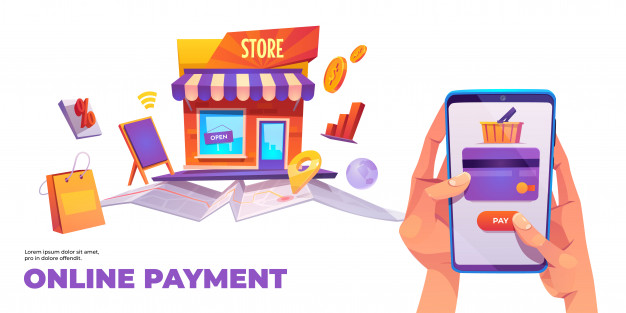How to Take Your Retail Business Offline to Online (O2O)
The COVID-19 issue has changed our lives and businesses in a short of months. With retail enterprises being hammered particularly hard, many store owners are unsure how they will stay viable. As a result, many small and mid-sized enterprises throughout the world are converting their operations from offline to online (O2O) in just a few weeks.
If you don’t have an active internet presence right now, you’re seriously limiting your capacity to reach out to potential customers who are shopping online for the first time. To keep these customers from going to your competition, you’ll need a fully functional e-commerce website that allows you to do all of your business digitally.
Making the transition from a brick-and-mortar to an internet retail operation isn’t always straightforward. What works offline might not work online, so you’ll have to come up with fresh ways to keep your existing consumers and attract new ones. As you consider making this change, consider if you have the requisite abilities to carry it through. Will you be able to turn your offline experience into a successful internet business?
If you’re not sure if you’ve got what it takes, we’ve put together this guide to assist you through every stage of the process of transitioning your retail business from offline to online. We’ll go through why it’s necessary and go over every step of the O2O i.e. offline to online process in depth.

To Shift Your Retail Firm From Offline To Online, Follow These Steps
1. Recognize the Need of Bringing your Offline Business Online.
Moving your offline business to an online setting is the best thing you can do to ensure the future success of your retail business. Even if you live somewhere that is entering the early phases of reopening, don’t be so quick to fall into the lull of business as usual. It’s never too early to prepare your firm for future possible interruptions, as these unforeseen situations have demonstrated.
Here are some more compelling arguments for switching to an online retail company model:
#1. The Internet was created with business in mind.
The internet already has an impact on every part of your organization. It’s a major source of product information, pricing, and reviews, and it’s likely that people are talking about your company online. even if you’ve never cultivated a web presence on purpose. To grow your digital profile and market to a new audience, capitalize on existing conversations by sharing favorable reviews and interacting to customers online. You can reach new clients that you wouldn’t be able to reach any other way because you have access to the entire internet at your fingertips.
#2. Potential customers will be able to locate you immediately.
People now have the ability to discover you at their fingertips, therefore it’s up to you to make sure the information is available. Consumers today are nearly certain to look up information on a company online before visiting them in person. They may also want to make their purchase totally online in many circumstances. On your website, include your address, hours of operation, and a “About” section to assist customers learn more about your company.
#3. Collaborate with other firms and professions more readily.
In today’s corporate world, networking and collaboration are essential, but the footwork of meeting new people and forming solid ties may be time-consuming. Joining social networking sites to meet professionals and putting your retail store online can help like-minded businesses find you for partnerships.
“Ecommerce is poised to grow 18.0% followinga 14.9% gain in 2019, further evidence of the digital shift”Emarketer
2. Understand the Benefits of Moving Your Retail Business from Offline to Online
“Ecommerce is expected to grow 18.0% in 2020, up from 14.9 percent in 2019, demonstrating the digital shift.”
Emarketer 2. Recognize the advantages of bringing your retail business online.
- Distribute your knowledge to the general public: Taking your retail store online is a great approach to let people know who you are and what you’re all about. You’ll have the ideal setting to showcase your products and services, as well as explain why a potential consumer should choose you as their problem-solving answer. You can explain aspects of your business to clients or educate them on related topics.
- Reduce operational and administrative costs by switching to an online retail business. Even if you have your physical storefront, you can work less hours because you won’t have to rely on foot traffic to bring in new customers. Your website does all of the heavy lifting for you.
- In a global market, find new leads and earn new sales: Taking your retail business online allows you to sell your products to a global market, broadening your company’s reach and giving an almost limitless supply of new clients.
- Stay open 24 hours a day, 7 days a week: Online purchasing can be done at any time and from any location. Don’t let store hours keep you from doing what you want. Having an online store allows customers to shop whenever it is convenient for them, allowing you to sell things 24 hours a day, seven days a week.
- Improve customer service: Having a website allows you to resolve client complaints at any time of day or night. Use a site feature like a chatbot to communicate with your consumers, answer easy queries, and track any concerns that require personal follow-up during office hours by posting the answers to popular inquiries in a FAQ area.
- Make the most of your advertising budget by doing the following: Online marketing allows you to get more bang for your buck by reaching out to a larger number of individuals than traditional marketing tactics. You may test methods, measure results, and make adjustments as needed with digital marketing. It’s a more effective technique to optimize your marketing and removes the risk of offline marketing.
Key Stats
- 90% of consumers used the internet to find a local business in 2019
- 33% of consumers look at local businesses online every day
- 75% of 18-55-year-olds search for businesses online each week
(Ref: BrightLocal)
Let’s look at the “how” now that you know the “why” of shifting your retail business online. Each step builds on the previous one, so make sure you follow them all to ensure a smooth and effective transition.
3. Gather Email Addresses from Offline Customers for Future Online Marketing Campaigns.
By gathering their email addresses for your marketing initiatives, you may use your present pool of customers as a resource for your digital transformation. Have an email sign-up sheet near to your register or reception area at your physical business. To encourage sign-ups, inform them that they will receive a discount voucher by email or text with a link to the site and a coupon.
You can also ask customers for comments on their experiences with opening an online store. This will not only assist to welcome your existing consumers to your new digital store, but it will also provide you with valuable insight into what your customers want when it comes to online purchasing.
-
Use targeted marketing
You send out advertising and newsletters that target different groups because of how effective digital marketing is. Create customised offers that appeal to your clients’ individual interests by segmenting them into distinct groups. For example, you could send a back-to-school special to your customers with children or an early bird special to retirees who are at home during the day.
-
Gather feedback from customers.
Testimonials are an excellent approach for potential clients to learn what others have to say about you and your company. As a result, they’re a great approach to attract new clients and customers. Request that happy customers provide testimonials describing what they like about your company. You can either have a review section on your website where people may offer their feedback voluntarily, or you may ask for permission to use their testimonials in your marketing efforts.
4. Evaluate your Online Resources
Take a look at your current web presence. Even if you are a late adopter of all the latest technology, you almost certainly have a digital footprint. Your new online business plan will be built on the foundation of your current online assets: what do you need to improve and what do you need to construct from the ground up?
Ask yourself the following questions to evaluate your internet assets:
What are all of the digital accounts associated with your company?
- Do you have a bare-bones website that you’ve been meaning to upgrade for years but haven’t gotten around to it?
- Do you have a social media presence on sites like Facebook, Twitter, YouTube, Instagram, Snapchat, Tiktok, and others? (Count these, even if they aren’t updated frequently.)
- Do you have any personal social media profiles that you use for business? This is a common occurrence on LinkedIn, so make sure you factor it in as well.
- Have you ever participated in online discussion boards or question-and-answer sites like Quora or Yahoo Answers? Have you responded to inquiries or started threads in your field of expertise?
Take into account your outcomes.
- Now go over the list you made earlier and ask yourself what worked and what didn’t. Keep a close eye on any achievements and failures, as well as the reasons for them.
- What were the outcomes of your experiment? Were you utilizing all of the tools available on each site to get the most out of your time investment?
- Consider how you can make use of those channels even more. Keep an eye on what other companies are doing with their web presence. Take note of your following, the tone of your postings, the frequency with which you post, and the time of day you publish. All of these observations can help you come up with useful social media techniques to test out in the future.
5. Make Plans to Transition Your Offline Presence to the Internet.
Make a plan for creating your online presence before diving into the deep end of the digital ocean. Answer some of the following crucial questions to figure out how you want to go about getting your retail business online:
- Do you wish to make a complete shift to an online company model?
- Can you manage the two businesses (online and offline) at the same time if you launch the online portion of your business while running your current one? Or will it add to your workload?
- Do you want to make the switch from offline to online gradually? If that’s the case, what will you start with in your company?
Keep in mind: just because you’re transferring your business online doesn’t mean you have to shut down your old one. You’re simply increasing the visibility and accessibility of your company to the people you serve.
6. Choose an E-commerce Platform to Take You From Offline to Online
Choosing an e-commerce platform is a straightforward but crucial step in taking your retail business online. You must first comprehend your possibilities before making a decision. E-commerce platforms are classified as either SaaS-based or open-source.
#1. SaaS-based e-commerce platforms
SaaS-based e-commerce platforms are a great option for folks who have never set up a website before and are incredibly easy to use. A SaaS (Program as a Service) platform is a subscription-based web-based software that you can access via the internet. To design and develop your website, you’ll utilize a user-friendly interface, and they’ll usually provide advice and lessons to make it as simple as possible.
You will be able to set up your store without any prior knowledge of coding or web hosting once you join up for this type of e-commerce platform. While this choice may be more expensive, the benefits and features it provides are frequently well worth the investment. If even that level of computer knowledge seems out of reach, You may always hire someone to assist you with this phase of taking your business online through the Fiverr marketplace. Popular SaaS eCommerce companies include Shopify and BigCommerce, for example.
#2. Open-Source E-commerce Platforms
Because there are no built-in tools to make web design accessible to beginners, open-source e-commerce platforms demand higher technical knowledge. An open-source e-commerce platform is a sort of website design software that allows anyone to modify or improve the code. They are significantly less expensive than SaaS choices and provide nearly endless customization choices, allowing you to tailor your website to your exact needs. To set this up, you’ll need more technical knowledge, but hiring a freelance web developer will supply that skills at a reasonable cost. Among the most prominent open-source eCommerce platforms are Magento, WooCommerce, and Drupal.
E-commerce Platform Must-Haves
Once you’ve decided how much customization your shopping site requires, you can concentrate on the features to look for when deciding which platforms to use.
- Mobile capabilities: The majority of individuals use their smartphones for everything, including internet shopping. You’ll want to make sure that your shopping site appears and works equally effectively on mobile devices as it does on desktop PCs. Many platforms include a simple tool that allows you to view how your site will look and work on both sorts of devices and easily change items to accommodate each.
- Security: Your loyal clients have trusted your old firm, and now your internet firm must win their faith as well. This becomes much more critical if you begin accepting payments online. Your site must have PCI-DSS compliant payment solutions to protect your clients’ credit card information and prevent hackers from stealing their personal and credit card information. It’s also beneficial if your platform uses Captcha technology to ensure that your users are not robots.
- Room to grow: As your company grows, so should your online store. Your website should be able to handle a lot of visitors and store as many pages or products as you require. Open-source platforms usually come with this as standard, but if you’re using a SaaS solution, look at how much bandwidth and storage you get, as well as how easy it is to add more if you need it.
- Product and order management solutions allow you to submit products to your website, map out shipping choices, and even manage orders. You may connect your order management system with your inventory to ensure that your orders are processed quickly. Order management software can also assist you in managing and tracking return orders.
- Multichannel integration: If your e-commerce site includes multichannel integration, it implies you may use it to handle other online seller marketplaces such as Amazon, eBay, Etsy, or Google Shopping if you’re already selling there or plan to do so in the future. It can be difficult to keep track of sales across multiple sites, so being able to do so might help.
7. Buy a Domain
A domain name is your website’s ‘address’ (URL). It’s the search term that customers will use to find your online retail store. It must be brief, distinct, and memorable in order for customers to find it and return to it.
When buying a domain, there are a few things to keep in mind:
- The domain name should be consistent with your company’s image. It should be similar to the name of your traditional store, but it does not have to be identical.
- Check to see if any similar versions have been registered on any other sites.
- Make a decision on which suffix to utilize. The most popular and reliable domain extensions are.com and.org.
The next step is to secure a domain name for your company. If you choose for a SaaS-based e-commerce platform, you can usually buy and register your domain through that platform. You’ll need to buy web hosting and a domain separately if you’re using an open-source e-commerce platform.
Offline to Online Bonus Tips
- Choosing a name: Pick a name that is short, memorable, and easy to recall. Ascertain that your clients will be able to remember and correctly spell your domain name.
- Link your social media accounts to your new website and add your website link to your social media pages once you’ve purchased your domain.
- Now is the best time to set up your social media profiles if you haven’t already. For consistent branding, choose social media handles that are similar to your domain name.
- Add testimonials: Including testimonials on your website demonstrates potential clients that you have a positive track record with clients. You can get one from loyal customers by asking them to fill out a survey and letting them know that their responses may be used for marketing purposes.
8. Build a High-Converting E-commerce Website
You’re now ready to build the greatest website for you and your clients. Consider all of the aspects of the websites you visit, especially those that you use for your own online buying needs. People may have various personal tastes when it comes to design components, but everyone wants a shopping experience that is simple and intuitive. Ease of use refers to how your website is laid out, making it easy to find and search for products, as well as its functionality. You want your website to run smoothly, with all of your photos loaded correctly and all of your sales functions working effectively.
Here are some more must-haves for your website:
Brand Consistency: Your website should match the look and feel of your existing company. Assure your customers that they will receive the same high-quality products they have come to expect. In an ideal world, your online business would be a seamless extension of your traditional firm, complementing each other equally well. Where customers can buy your products online or in person, whatever is more convenient for them.
Quality Images: Use clean, in-focus shots that display the item from various angles to create high-quality photographs. To display the product both on its own and in use, you should shoot your images on a white background and in a lifestyle shot. Make sure they’re optimized for quick loading on your site, no matter what device someone’s using.
Demonstrate How It’s Done: When possible, incorporate videos, particularly how-to tutorials. If your product requires assembly, include a video on your website that demonstrates how simple it is to put it together by providing a step-by-step explanation. A moving 360-degree image of the product is another video must-have. It will allow your customers to get the entire experience of the goods, just as if they were at your physical store.
Mobile Responsiveness: The importance of a decent mobile website cannot be overstated. Check the mobile view before publishing if you’re utilizing a SaaS e-commerce platform to make sure your design is responsive. If you’re using open-source, ensure sure your developer or designer understands and fulfils this criteria.
9. Plan for Marketing & SEO
After you’ve created your website, you’ll need to make sure that people can find it. You have a small audience of loyal present consumers, but with an internet retail business, you can now make your services and products available to the entire world. Take note of the following suggestions on growing your online audience to broaden your reach to new clients in online shopping.
#1. Create incentives to attract people to join up for email newsletters.
When you visit a website that reads “Enroll in our newsletter to earn 10% off your first purchase,” this usually appears as a pop-up. These no-cost opt-in bonuses can help you grow your email list. If you can’t offer a discount as an incentive, you might promise future bargains in your newsletter or give customers the opportunity to acquire hot-ticket items before they sell out to the larger public in the future.
#2. Increase the number of people who follow you on social media.
With so many social networking sites to choose from, it can be difficult to know where to start. You don’t have to use every social media platform; instead, concentrate on the ones where your target audience spends the most time. You can find out by conducting market or competitor research, or by engaging a social media professional to assist you in determining the appropriate platforms.
#3. Use Paid Ads
Buying advertising on social media platforms like Facebook and Twitter, as well as using tools like Google AdWords, are wonderful ways to enhance your new online brand’s profile. You can target clients who are searching for the terms you’ve chosen by using Google’s advertising platform. Pay-per-click (PPC) marketing means that you only pay when someone clicks on your ad and visits your website. You may establish a budget cap for particular campaigns and bid on how much you’re willing to pay for each click so you know how much you’ll spend.
Because social network ads are often less expensive, they may be the simplest way to get started with internet advertising. Each platform provides instructions on how to buy ads. You can also outsource this operation to a freelancer on the Fiverr marketplace if these types of ads are unfamiliar territory.
#4. Hire an SEO professional.
When you appear in Google searches for terms and keywords that are related to your business, SEO, or search engine optimization, generates traffic to your site. However, SEO isn’t as simple as adding a few key words to your website. The site architecture and navigation, picture alt tags and optimization, and a slew of other on-page and technological components must all be taken into account.
Because SEO is a time-consuming and continuing process, it’s preferable to employ a freelance SEO consultant who can develop a long-term plan for increasing your website’s visibility. They’ll handle everything from keyword research to image optimization, as well as keeping up with any big SEO changes.
10. Last-minute Preparations for the Offline to Online Launch
Your e-commerce site is nearly complete: all that remains is to ensure that clients can complete purchases and receive their products.
#1. Configure your payment methods
Many e-commerce platforms include payment alternatives, so setting up payment is as simple as picking and entering account details. Connecting your PayPal account to your website, for example, is a simple process.
Furthermore, if you use Square as a point-of-sale system for your brick-and-mortar business, you can utilise it for web payment to streamline your procedure. If your checkout process spans multiple web pages, it’s also a good idea to include a progress bar so customers can see how many steps are left before they finish.
#2. Configure the shipping methods
Select a shipping carrier to deliver things purchased online. Consider what you’re delivering and how much it weighs, where you’ll be delivering to, what monitoring options are available, and the cost when selecting a shipping service.
Check to discover whether your e-commerce platform has an affiliated shipping carrier that offers a discount on shipment. If at all possible, supply your customers with a selection of delivery alternatives that span both shipping speed and pricing points to provide them as many choices as feasible.
#3. Make sure you’re in conformity with tax laws
Tax laws are extremely crucial in your brick and mortar firm, and the same is true as you convert to an online retail business model. Now that your internet business has increased your possible consumer base, make sure you have up-to-date sales tax information when it comes to selling in your state to other states and even countries.
11. Go Live With It
Now that your website is complete and ready for your first sale, you can confidently launch it. Send a celebration email to your traditional clients to welcome them to your new site to celebrate your new revenue stream. Include a coupon code or a discount code in your welcome email to entice customers to check out your new site. Consider putting a sign in your shop window with your new web address so customers intending to make a purchase will know where to locate you while you are unable to do business in person.
By Going from Offline to Online, You May Expand The Reach Of Your Retail Firm
Transitioning your retail business from offline to online is the best way to stay current in today’s unpredictable retail market. Even as traditional businesses begin to reopen, this crisis has opened all of our eyes to the potential roadblocks that prevent business from occurring as usual. Businesses require as many retail streams as possible in the event of another unforeseen circumstance. There are other advantages to selling online that go beyond being prepared for a future emergency.
Online retail stores enable you to reach new customers in markets outside of your local service region. It also allows customers to shop when it is most convenient for them, allowing them to shop 24 hours a day, seven days a week, outside of the hours of your physical business. Furthermore, compared to a traditional store, running an online store can save you money in overhead costs and allow you to streamline your advertising.
With all of the technologies accessible, switching to the internet is now easier than ever. To get the most out of your new e-commerce website, you can handle it yourself or hire a professional freelancer. Prepare for a new chapter of business growth as your company’s reach expands further than ever before.
About the Author
 Donald Gonsalves is the founder of Enthof Creatives and a regular writer for the website’s blog. He has more than 2 decades of experience in marketing, sales and branding. His need to research and learn more about these segments in never ending. To contact him, just drop an email to donald.g@sh118.global.temp.domains
Donald Gonsalves is the founder of Enthof Creatives and a regular writer for the website’s blog. He has more than 2 decades of experience in marketing, sales and branding. His need to research and learn more about these segments in never ending. To contact him, just drop an email to donald.g@sh118.global.temp.domains
Follow him on Linkedin – https://www.linkedin.com/in/donaldgonsalves



